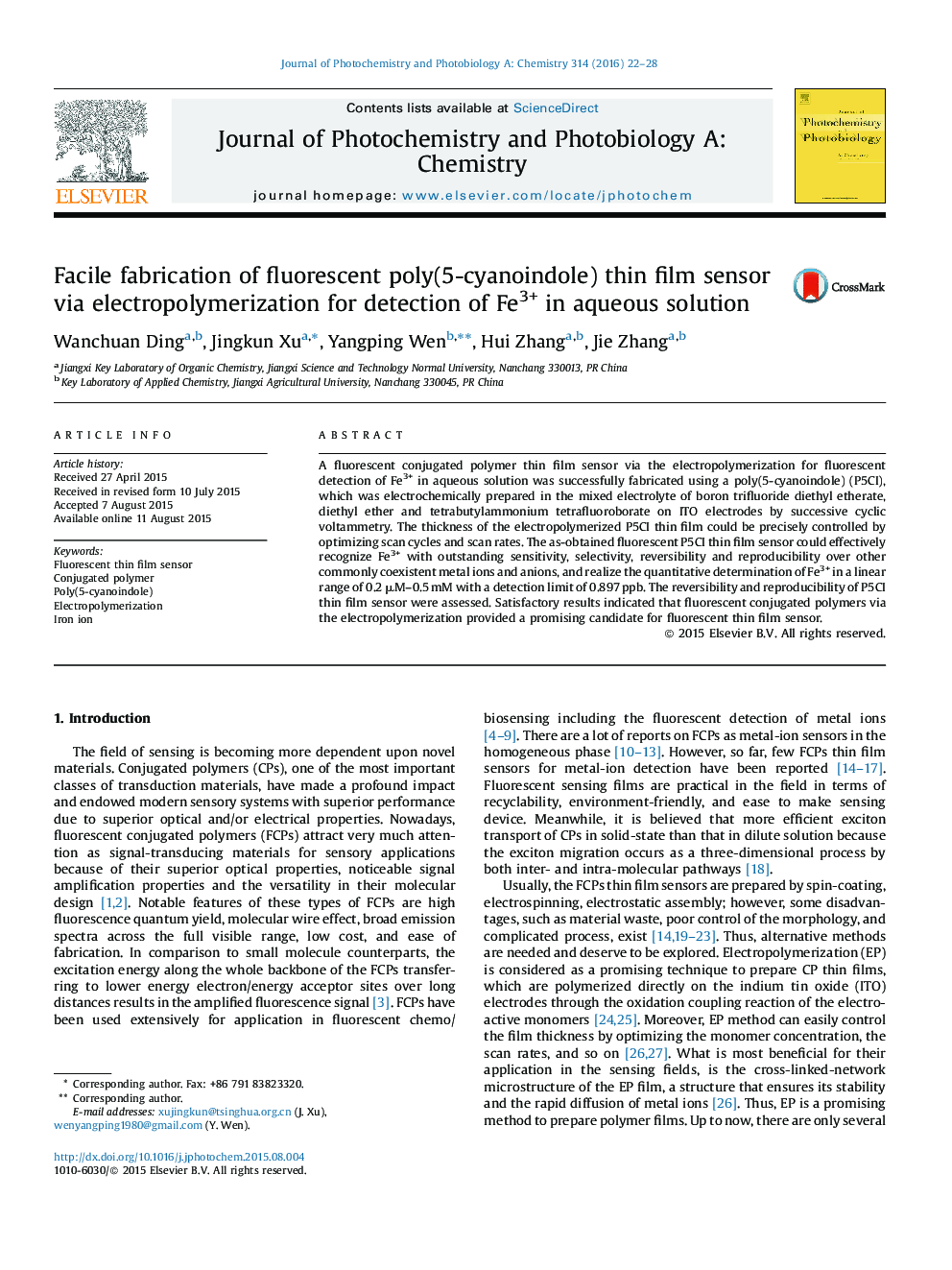| Article ID | Journal | Published Year | Pages | File Type |
|---|---|---|---|---|
| 26361 | Journal of Photochemistry and Photobiology A: Chemistry | 2016 | 7 Pages |
•Intensification of the temperature swing adsorption process.•Analysis of a TSA gas drying unit employing the multi-layered bed of adsorbents.•Developing of non-isothermal model to simulate the adsorption-desorption process.•Prediction of the performances of gas dehydration using vari ous adsorbents.
A fluorescent conjugated polymer thin film sensor via the electropolymerization for fluorescent detection of Fe3+ in aqueous solution was successfully fabricated using a poly(5-cyanoindole) (P5CI), which was electrochemically prepared in the mixed electrolyte of boron trifluoride diethyl etherate, diethyl ether and tetrabutylammonium tetrafluoroborate on ITO electrodes by successive cyclic voltammetry. The thickness of the electropolymerized P5CI thin film could be precisely controlled by optimizing scan cycles and scan rates. The as-obtained fluorescent P5CI thin film sensor could effectively recognize Fe3+ with outstanding sensitivity, selectivity, reversibility and reproducibility over other commonly coexistent metal ions and anions, and realize the quantitative determination of Fe3+ in a linear range of 0.2 μM–0.5 mM with a detection limit of 0.897 ppb. The reversibility and reproducibility of P5CI thin film sensor were assessed. Satisfactory results indicated that fluorescent conjugated polymers via the electropolymerization provided a promising candidate for fluorescent thin film sensor.
